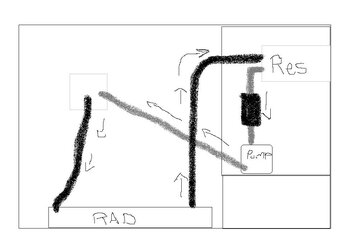Hi I started a thread there http://hardforum.com/showthread.php?t=1497024
but I still I'm unsure about Rad positionning.
Initially I had planned to mount my rad like that http://img64.imageshack.us/img64/7106/config1.png
But when my father saw me it said that it was stupid to shoot hot air from the rad onto the reservoir and inside the case.
He thinks it's better to remove the top fan and place the rad with fan shooting air from inside the case to the exterior. The opening on top of the case is slightly smaller than the rad so it would restrict the airflow a little
What do you think ?
Poll : (I did not find how to do a real poll)
but I still I'm unsure about Rad positionning.
Initially I had planned to mount my rad like that http://img64.imageshack.us/img64/7106/config1.png
But when my father saw me it said that it was stupid to shoot hot air from the rad onto the reservoir and inside the case.
He thinks it's better to remove the top fan and place the rad with fan shooting air from inside the case to the exterior. The opening on top of the case is slightly smaller than the rad so it would restrict the airflow a little
What do you think ?
Poll : (I did not find how to do a real poll)
- Rad on top airflow inside > outside
- Rad in front airflow inside > outise
- Rad in front airflow outside > inside

